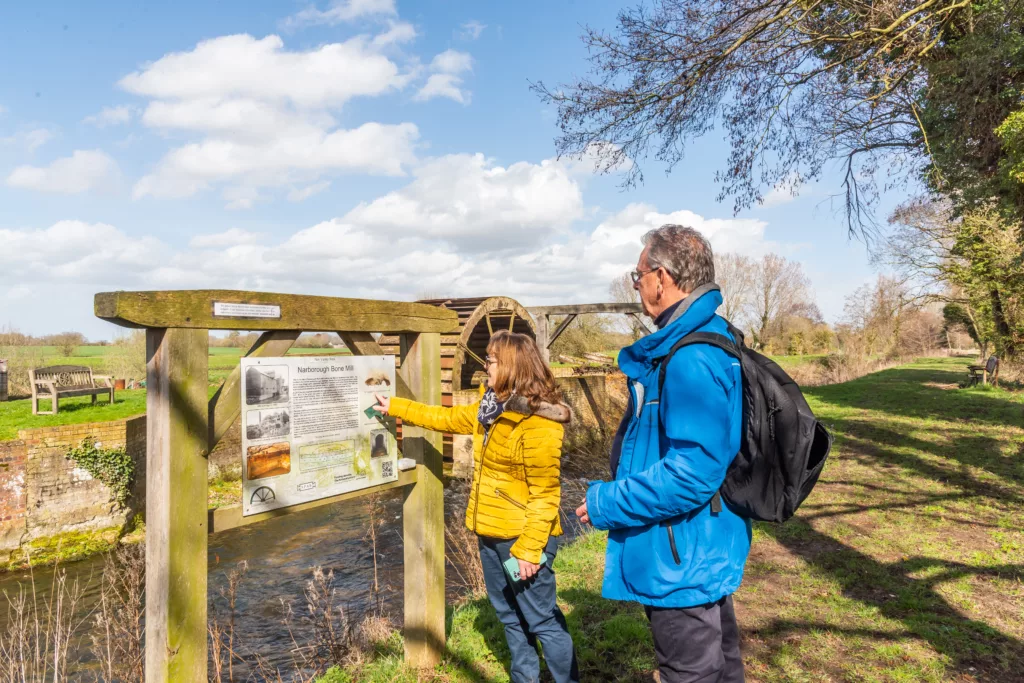The crystal-clear waters of the River Nar flow white and fresh, full of vigour, channelled by the mill at Narborough. Twisting around stubborn stones beneath bowing trees the water bubbles, sparkling in dappled light. But downstream is the secret relic of a bloody industrial past.
You’ve heard of flour mills and timber mills. How about mills to grind bone? Norfolk had several bone mills operating through the last century, but Narborough Bone Mill is the only one where substantial workings remain. The mill once rendered bones from slaughterhouses and the whaling industry to make agricultural fertiliser. At the Greenland Whaling Fishery in King’s Lynn, the left-over bones from processed whale blubber were transported up the Nar by barge to Bone Mill. Sacks of bone meal were shipped back to Lynn, Cambridge and beyond, until the mill stopped operating in the late 19th century. Little of the building survives, yet the imposing 16-foot metal water wheel still sits on the crumbling foundations lining the river where it flows through the old staunches and mitre gates. See it best from the Nar Valley path, a monumental reminder of a past era, before whaling became illegal.
From about 1830 the mill belonged to the Marriott brothers, who also owned the Narborough Maltings and Marriott’s Warehouse in King’s Lynn, now an atmospheric place to eat and drink.
Volunteers restored the decaying mill wheel, getting it turning again in 2015. See it in action on National Mills Weekend and Heritage Open Days.



